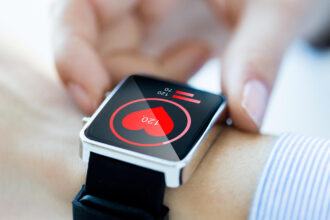In the sprawling mosaic of technological advancements, 3D printing stands out as a colorful and intricate tile, resonating with potential and promise.
The concept, once confined to the realms of science fiction, is now a tangible reality, continually reshaping numerous sectors. This article delves deep into the current state of 3D printing technology, highlighting its progress, applications, and the seamless synergy it shares with rapid prototyping companies.
Tracing the history of 3D printing development
The narrative of 3D printing, commonly referred to as additive manufacturing, isn’t a recent chapter in the annals of technology. Its genesis can be traced back to the 1980s, a time when the digital realm began its dance with the tangible world.
Pioneers of the era toyed with the idea of layer-by-layer manufacturing, laying the groundwork for what would later become a technological marvel.
The initial years witnessed 3D printing as a fringe technology, predominantly nestled within the confines of industrial behemoths. It was a luxury, a curious blend of art and science, used primarily for prototyping and niche applications. The broader public, for the most part, remained oblivious to its potential, seeing it as the stuff of labs and factories.
However, as the 21st century dawned, the winds of change began to stir. The past decade, in particular, has seen an unprecedented acceleration in 3D printing’s trajectory.
Bolstered by advancements in materials, software, and machinery, its capabilities expanded exponentially. No longer just a tool for the elite, it began permeating various facets of daily life.
Educational institutions started integrating 3D printers into their curricula, instilling creativity and innovation in young minds.
Simultaneously, startups and entrepreneurs embraced the technology, leveraging its flexibility and cost-effectiveness to disrupt traditional manufacturing paradigms.
Today, the once fledgling technology stands as a testament to human ingenuity, finding its place everywhere, from sophisticated industrial setups to the cozy corners of our homes.
As we stand in the present, the kaleidoscope of 3D printing services reveals a vibrant and dynamic spectrum. The leaps and bounds made in this sector are not just evolutionary, but revolutionary, redefining the very fabric of manufacturing. Let’s embark on a tour of the contemporary landscape of 3D printing:
A Diverse Material Palette: The infancy of 3D printing was marked by its reliance on specific plastics, a limitation that often handcuffed innovators. Today, the story is strikingly different.
The canvas of materials has expanded beyond rudimentary plastics to encompass metals, ceramics, resins, and groundbreaking biological materials.
Titanium implants, ceramic art pieces, resin-based prototypes, and even pioneering experiments in bio-printed tissues are testament to this expansive shift. Industries stand transformed; healthcare professionals now tailor-make implants, aerospace engineers optimize lightweight components, and jewelers craft intricate designs, all thanks to the diverse material repertoire.
The Pinnacle of Precision: The 3D printers of yesteryears, while innovative, had their limitations in resolution. Contrast that with today’s machines, which are masterpieces of precision.
These modern marvels can reproduce the minutest of details, the most labyrinthine of internal architectures, with a fidelity that was once deemed fantastical.
This razor-sharp accuracy empowers designers and engineers to push boundaries, realizing creations that marry form and function in unprecedented ways.
Beyond Miniatures – The Grand Scale of Printing: If early 3D printing was synonymous with crafting diminutive objects, today’s narrative is vastly enlarged. We’re in the midst of a scale revolution.
Current 3D printing technology isn’t restricted to desktop-sized creations; it’s building life-sized and larger structures.
From avant-garde furniture pieces that become centerpieces of modern homes, to architectural marvels that challenge traditional construction paradigms, and even entire houses – the scope is vast and growing. This capability isn’t just about size; it’s about reimagining habitats, spaces, and lifestyles.
In essence, the present milieu of 3D printing is a vibrant tapestry of possibilities, each thread signifying an innovation, weaving together a future that promises even more transformative wonders.
Rapid Prototyping and 3D Printing: Pioneering Seamless Design Innovations
The core division of all leading rapid prototyping companies, and the transformative influence of 3D printing services becomes unmistakably evident.
Rapid prototyping, an art that’s all about breathing life into preliminary designs, finds its most potent ally in 3D printing, and here’s why:
Acceleration to the Max: At its core, rapid prototyping is all about swift manifestation of ideas. Traditional methods, while dependable, often became marathon sessions of molding and assembling.
However, with the advent of 3D printing, these once drawn-out processes are now sprint races. Concepts leap from digital sketches to tangible prototypes at breathtaking speeds, offering rapid prototyping companies a competitive edge like never before.
A Financial Game-Changer: Dive into the annals of prototyping history, and the cost-intensive nature of creating molds stands out, particularly for bespoke, one-time designs. 3D printing heralds a seismic shift in this narrative.
By adopting an additive, layer-by-layer approach, it sidesteps the mold-making ordeal, translating to substantial savings. For businesses, both fledgling and established, this cost revolution paves the way for more expansive, risk-embracing innovations without the looming shadow of exorbitant expenses.
Adaptability at its Best: The prototyping journey is seldom a straight path. It’s punctuated by feedback, insights, and iterative refinements. In a pre-3D printing world, design alterations were daunting endeavors, often backtracking to the initial stages.
Now, thanks to 3D printing services, rapid prototyping companies can effortlessly pivot. A tweak in the digital blueprint, and the printer is ready to roll out a revised prototype that aligns closer to the envisioned final product.
The Complex Challenges Shadowing 3D Printing’s Ascent
While 3D printing’s meteoric rise paints an optimistic picture, like any transformative technology, it grapples with its own set of challenges. As stakeholders from designers to rapid prototyping companies embrace its potential, they also confront pressing concerns that need addressing:
Sustainability
As 3D printing becomes more widespread, there are concerns about waste and energy consumption. The industry is actively exploring eco-friendly materials and energy-efficient processes.
Intellectual Property
With the ability to replicate designs, there arise significant IP concerns. Regulations and protections are still catching up.
Conclusion
The current state of 3D printing is a testament to human ingenuity and the relentless pursuit of innovation.
As it continues to meld seamlessly with services like those offered by rapid prototyping companies, it’s evident that we’re on the brink of a new industrial revolution.
The coming years will not just see an evolution of this technology but a transformation in how we create, consume, and conceive the very idea of manufacturing.














